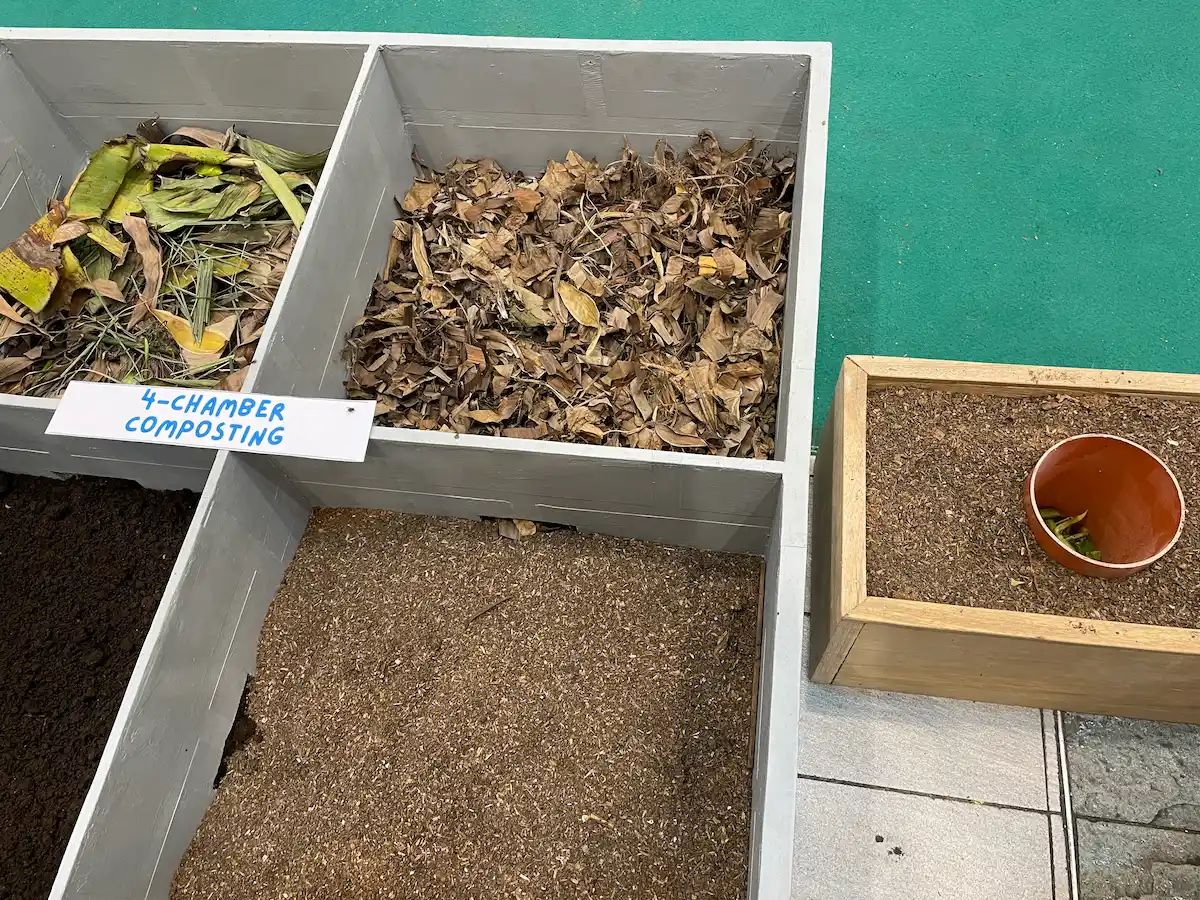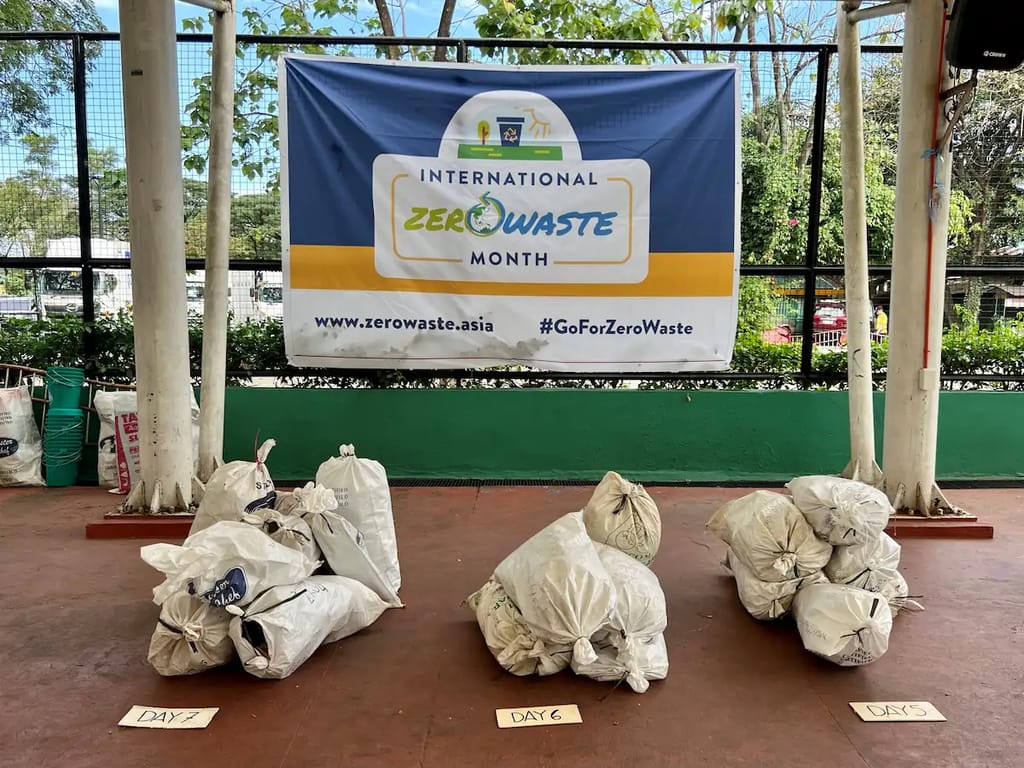Everywhere I’ve lived, I’ve had two options for where to put my trash: a blue bin for things like newspapers, beverage bottles and other recyclables, and a not-blue bin for everything else.
That changed when my husband and I moved to eastern Washington state a few years ago. Our new city offered curbside composting, and ever since then we’ve been separating eggshells, coffee grounds and other food items from the rest of our household waste.
Admittedly, it’s not always pleasant to peer into our countertop compost pail at the end of the day (or, since we’re being honest, the end of two or three days). But the change has underscored just how much of our waste stream was previously going into landfills.
Never miss an update
Enter your email and never miss an update
document.addEventListener(‘DOMContentLoaded’, function() {
const form = document.getElementById(’email-signup-6410d4b3a9959′);
form.querySelector(‘.rsform__field–email’).addEventListener(“nb:result”, e => {
const nbStatus = form.querySelector(“[name=”nb_email_status”]”);
const nbDate = form.querySelector(“[name=”nb_validation_date”]”);
const tokenField = form.querySelector(“[name=”token”]”);
const currentDate = new Date();
nbStatus.value = e.detail.result.response.status;
nbDate.value = currentDate.toISOString().split(‘T’)[0];
grecaptcha.enterprise.ready(async () => {
const token = await grecaptcha.enterprise.execute(‘6Lcmr3shAAAAAAVRlvJrsUufEEQuItzNDlkpmB2g’, {action: ‘verify’});
tokenField.value = token;
});
});
});
<!– –>
And as I learned at the International Zero Waste Cities Conference held January 2023 in Quezon City (part of Metro Manila in the Philippines) in, this impacts our planet and our ocean in many ways.
Food and other organic waste rotting in landfills or dumps emit a greenhouse gas called methane, which is far more powerful at trapping heat than carbon dioxide. Unfortunately, a lot of organic waste ends up in landfills. (More than 30% of landfilled material in 2018 in the United States consisted of food waste and yard trimmings, according to the EPA.) It’s no surprise, then, that the global waste sector accounts for roughly 20% of all man-made methane emissions, according to a recent report by the zero-waste advocacy group (and conference organizer) Global Alliance for Incinerator Alternatives (GAIA).
That’s why composting is so important, and indeed several advocacy groups echoed the need for composting as part of zero-waste strategies in their presentations at the conference, outlining zero-waste case studies and success stories from around the region. GAIA and its NGO member Mother Earth Foundation (MEF) even made composting the centerpiece of a pop-up zero-waste market at a nearby shopping center.

if(typeof window.oc_media_credits === ‘undefined’) {
window.oc_media_credits = {};
}
window.oc_media_credits[68156] = “Jordana Lewis”;
Curbing emissions is critical for the health of our ocean, of course. But collecting and composting organic materials has another important benefit beyond that: It helps decontaminate the rest of the waste stream, allowing for more effective recycling.
This truth was laid bare at a press event a few days ahead of the conference, where several Ocean Conservancy colleagues and I participated in a Waste Assessment and Brand Audit (WABA) organized by GAIA and members Ecowaste Coalition and MEF. They collected eight days’ worth of household waste from several city wards (known as barangays) in the Manila region. Froilan Grate, GAIA Asia Pacific Coordinator, explained that the organic material—which makes up around 60% of the waste stream in the region—had already been diverted for composting. A team of waste workers and volunteers was now culling through the remaining (mostly) dry material, sorting each item into dozens of separate categories to determine what was and was not recyclable.

if(typeof window.oc_media_credits === ‘undefined’) {
window.oc_media_credits = {};
}
window.oc_media_credits[68155] = “Jordana Lewis”;
Froilan explained that items like bottles, cans and jars are relatively easy to manage because they are widely recyclable, and, in fact, he and his team do not necessarily consider these items “waste” when recovered for reuse or recycling. But there were many bags and buckets full of “residual” items that could not be recycled—things like plastic bags, food wrappers and sachets.
Indeed, sachets (soft plastic packets typically containing small amounts of liquids or powders) were particularly common, reflecting a years-long trend in which global consumer goods companies have shifted their sales strategy in the region to market smaller portions of their products. Companies have argued that these smaller portion sizes make the products more affordable in developing countries where larger proportions of the population are low-income. But the results are disastrous for the environment and the communities impacted by the pollution. And, as important, more sustainable, affordable options do exist, Froilan pointed out, and we shouldn’t let companies suggest otherwise. In fact, some of these solutions, like bulk refill and reuse models, have already been deployed in some parts of the Philippines.
That’s why for sachets and other nonrecyclable single-use plastic items, the message from GAIA was clear: We need to stop making these types of packaging, and companies that do make them need to be held responsible for the impact their products are having on our planet.

if(typeof window.oc_media_credits === ‘undefined’) {
window.oc_media_credits = {};
}
window.oc_media_credits[68153] = “Nick Mallos”;
We couldn’t agree more. A huge portion of the plastics collected by volunteers during Ocean Conservancy’s annual International Coastal Cleanup® are single-use plastics, and nearly 70% of the most commonly collected items over the last 35 years of the cleanup are effectively unrecyclable. What this means is that to solve the ocean plastics crisis, we need to make less plastic, full stop. And we need to make sure that the plastics we do end up making are recyclable AND actually recycled. To learn more about how Ocean Conservancy is advocating for source reduction, stronger and more effective recycling, and producer accountability, visit our Trash Free Seas® newsroom, or keep an eye on this blog.
The post Is Composting Good for the Ocean? appeared first on Ocean Conservancy.

